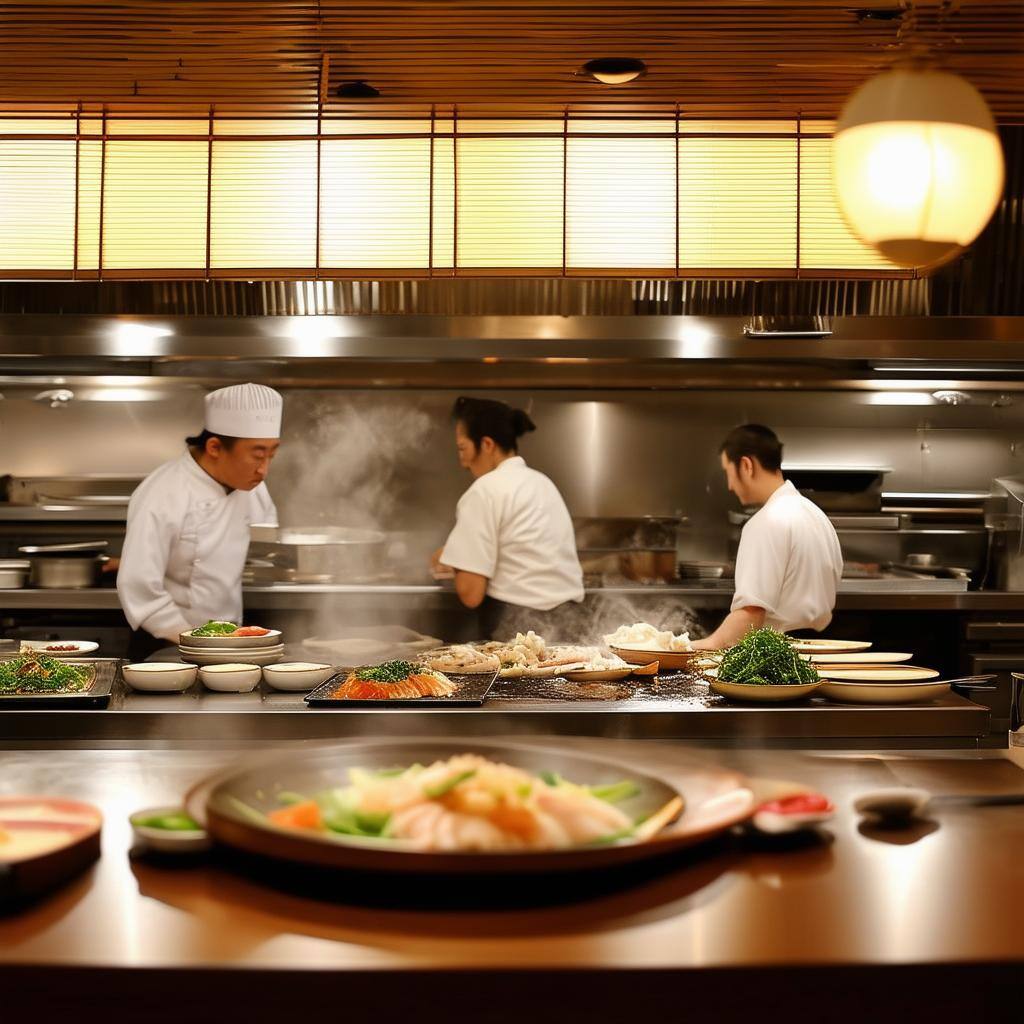Running a Japanese restaurant requires specialized equipment to prepare and serve authentic dishes such as sushi, ramen, and tempura. Whether you’re opening a new restaurant, upgrading your existing kitchen, or expanding your operations, acquiring high-quality equipment is essential. However, the cost of specialized restaurant equipment can be a significant financial burden. Financing or leasing offers an affordable solution to equip your restaurant without straining your capital.
This guide will explore financing and leasing options for Japanese restaurant equipment, the benefits of each, and how to choose the right solution for your needs.
Essential Japanese Restaurant Equipment
To deliver an authentic Japanese dining experience, you’ll need specialized kitchen equipment and tools. Commonly financed or leased items include:
- Sushi Prep Tables: Refrigerated workstations for preparing sushi with precision.
- Rice Cookers: Commercial-grade cookers designed for large batches of perfectly cooked rice.
- Tempura Fryers: Specialized deep fryers for tempura dishes.
- Teppanyaki Grills: Flat grills for tableside cooking of teppanyaki-style dishes.
- Ramen Noodle Machines: For making fresh, high-quality ramen noodles.
- Sashimi Knives and Cutting Boards: Essential tools for slicing fish and other ingredients.
- Refrigeration Units: Walk-in coolers, freezers, and sushi display cases for preserving ingredients.
- Dishwashers: High-capacity machines for cleaning dishes efficiently.
- Point of Sale (POS) Systems: Digital systems to manage orders, payments, and inventory.
Benefits of Financing or Leasing Japanese Restaurant Equipment
Opting for financing or leasing provides several advantages for restaurant owners:
1. Preserve Cash Flow
Instead of paying a lump sum upfront, spread the cost of equipment over manageable monthly payments.
2. Access the Best Equipment
Invest in high-quality or specialized equipment essential for delivering authentic Japanese cuisine without compromising due to budget constraints.
3. Flexibility to Upgrade
Leasing agreements often include options to upgrade to newer models, helping you keep pace with the latest innovations.
4. Tax Benefits
Depending on your arrangement, lease payments or depreciation on financed equipment may be tax-deductible.
5. Faster Scalability
Easily expand your restaurant’s operations by acquiring additional equipment through flexible financing or leasing options.
Financing Options for Japanese Restaurant Equipment
There are multiple financing options available for restaurant owners:
1. Equipment Loans
Borrow a lump sum to purchase the equipment outright, with the equipment serving as collateral. Ownership transfers to you once the loan is fully repaid.
2. SBA Loans
The Small Business Administration (SBA) offers loans with low interest rates and extended repayment terms. These are excellent for financing equipment in established restaurants.
3. Vendor Financing
Some equipment suppliers offer in-house financing programs with promotional rates, making it easier to purchase equipment directly from them.
4. Business Lines of Credit
A flexible funding option that allows you to draw funds as needed to acquire various equipment over time.
5. Lease-to-Own Financing
Lease the equipment with an option to purchase it at the end of the lease term, providing a path to ownership.
Leasing Options for Japanese Restaurant Equipment
Leasing is an excellent option for restaurants that want flexibility or are wary of long-term ownership commitments. Common leasing options include:
1. Operating Lease
A short-term lease that allows you to use the equipment for a set period without owning it. Ideal for temporary needs or frequent upgrades.
2. Capital Lease
A long-term lease designed for those who plan to own the equipment at the end of the term.
3. Fair Market Value (FMV) Lease
Provides the option to purchase the equipment at its fair market value at the end of the lease or return it if no longer needed.
4. $1 Buyout Lease
Allows you to purchase the equipment for $1 at the end of the lease term, offering a straightforward path to ownership.
Qualifying for Financing or Leasing
To secure financing or leasing for your Japanese restaurant equipment, you’ll need to meet certain criteria:
1. Creditworthiness
A strong personal or business credit score can improve approval chances and lead to more favorable terms.
2. Financial History
Lenders review your income statements, tax returns, and cash flow to assess your ability to repay.
3. Time in Business
Established restaurants have an advantage, but startups can qualify with a solid business plan and collateral.
4. Equipment Details
Provide information about the equipment’s cost, specifications, and purpose to support your application.
Steps to Secure Financing or Leasing
- Determine Equipment Needs: Identify the specific equipment your restaurant requires to operate efficiently.
- Research Providers: Compare financing and leasing companies to find competitive rates and favorable terms.
- Prepare Documentation: Gather financial statements, credit reports, and equipment quotes.
- Submit Your Application: Apply for financing or leasing, detailing your business goals and equipment needs.
- Review the Agreement: Carefully review terms, including payment schedules, maintenance responsibilities, and end-of-term options.
Tips for Choosing the Best Option
- Prioritize Long-Term Needs: Financing or a lease-to-own option is ideal for equipment you plan to use long-term.
- Consider Upgrade Frequency: Leasing is better if you expect to frequently upgrade to newer equipment.
- Evaluate Costs: Compare total costs, including interest rates or leasing fees, to determine the most cost-effective solution.
- Consult a Tax Advisor: Understand the tax implications of your chosen financing or leasing arrangement.
Conclusion
Financing and leasing are practical solutions for acquiring Japanese restaurant equipment, enabling you to run your business efficiently while preserving your cash flow. By exploring your options and partnering with the right provider, you can equip your restaurant with the tools needed to deliver exceptional culinary experiences and drive long-term success.











